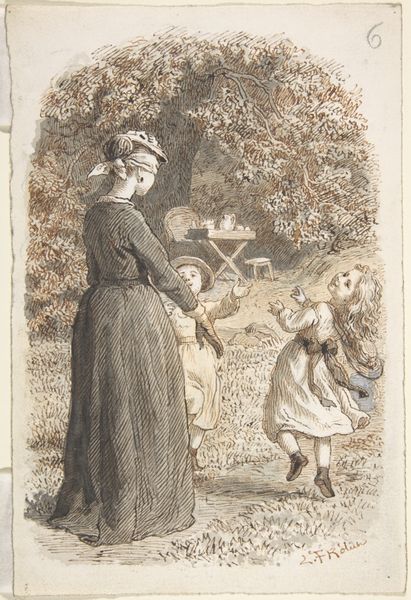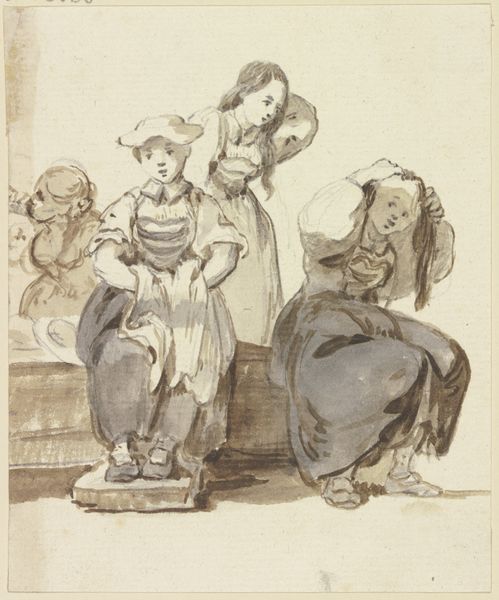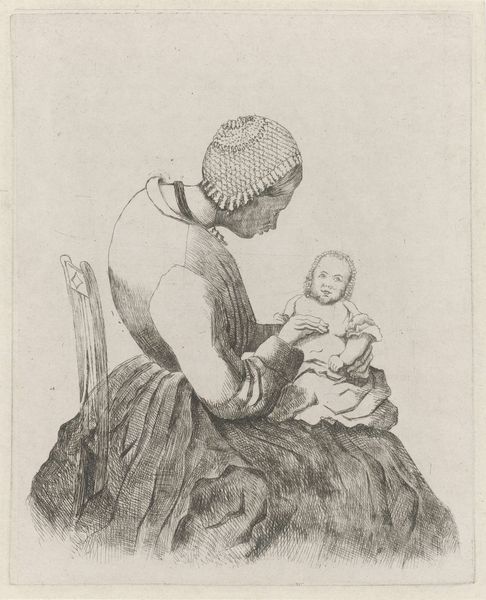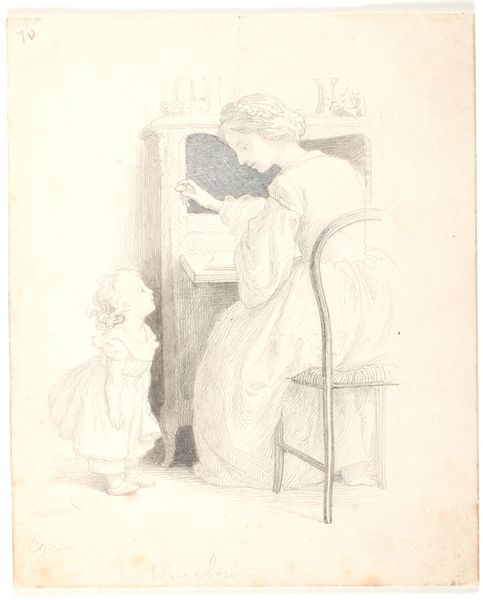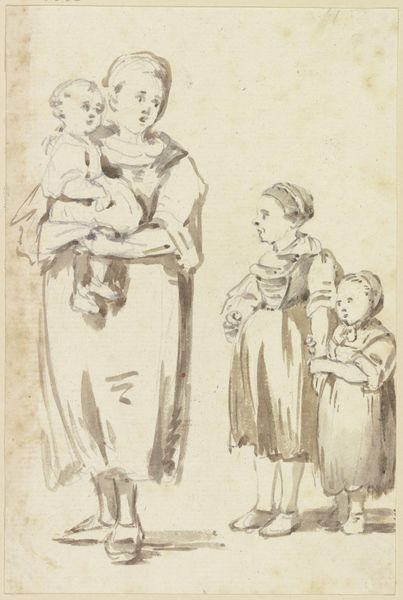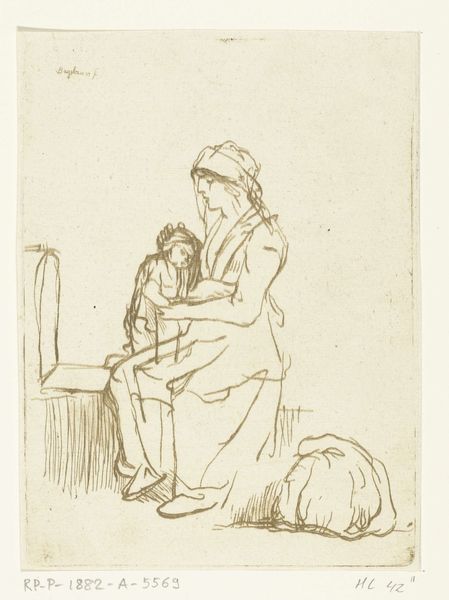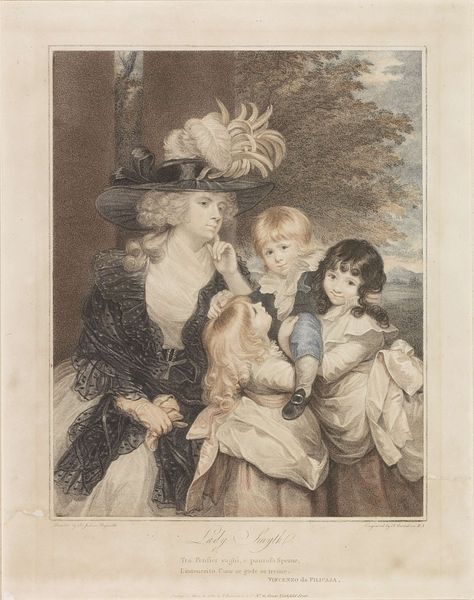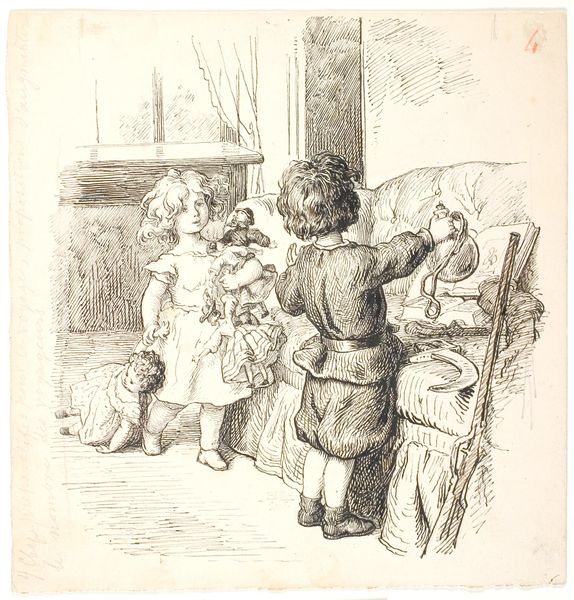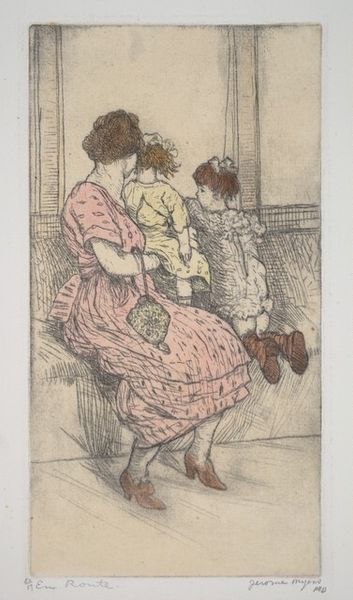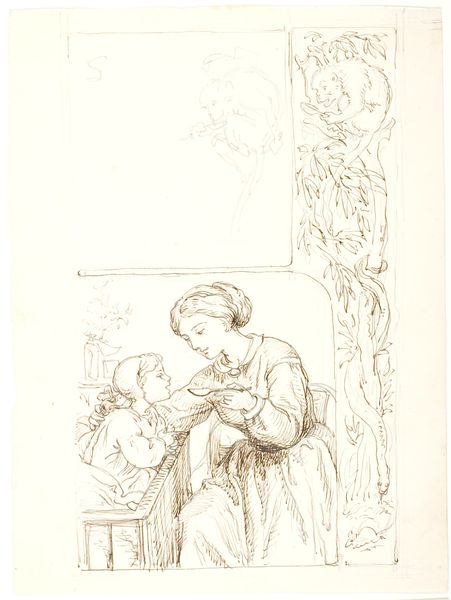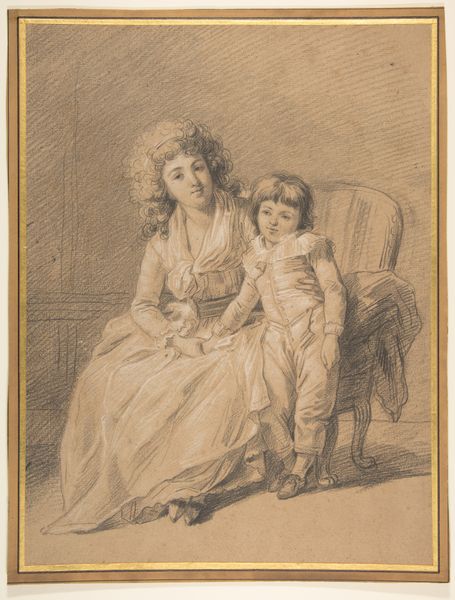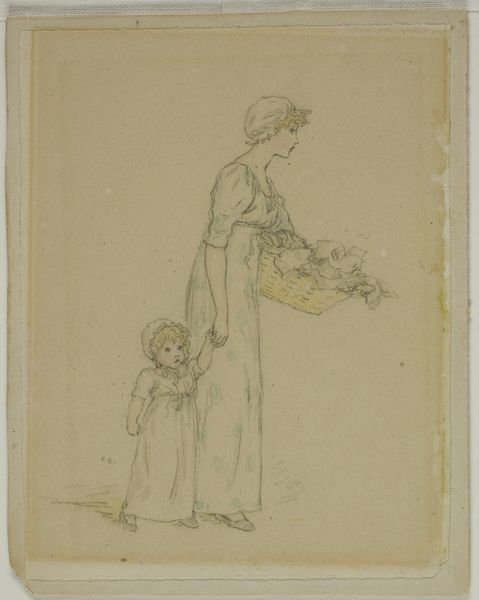
Zwei junge Bäuerinnen in Basel, die eine mit einem Kind auf dem Schoß c. 1771 - 1772
0:00
0:00
drawing, watercolor, pencil, chalk
#
portrait
#
drawing
#
figuration
#
watercolor
#
coloured pencil
#
pencil
#
chalk
#
genre-painting
#
watercolor
Copyright: Public Domain
Editor: This watercolor, pencil, and chalk drawing from around 1771 to 1772 by Georg Melchior Kraus is titled "Two Young Peasant Women in Basel, one with a Child on her Lap." The women look rather solemn, even stoic. What can you tell me about the world they lived in? Curator: Absolutely. Kraus provides a glimpse into 18th-century rural life, but through a very specific lens. Notice their traditional garments; clothing acts as a powerful signifier of identity and social standing, doesn't it? Consider what it meant to be a woman, a peasant, and a mother during that period. The drawing captures not just an image, but a complex intersection of gender, class, and familial roles. Editor: That makes sense. I was so focused on the surface appearance I didn't stop to consider those aspects of their lives. How would their experiences differ from someone in the city? Curator: Enormously. Think about the structures of power that dictated their lives: feudal systems, agricultural labor, limited access to education and opportunities. The burden of childcare often fell disproportionately on women, restricting their autonomy. Look at the woman holding the child. Does her expression suggest contentment or resignation, in your view? Editor: Hmm, I see what you mean. Resignation, maybe? She looks tired, and also very young to have such heavy responsibilities. Curator: Precisely! Kraus is prompting us to contemplate their lack of agency and question the romanticized portrayals of peasant life common at the time. Is he glorifying their existence, or subtly critiquing the societal forces that shaped it? The relative lack of adornment can be a kind of signal about how to see her position and social constraints. Editor: This really shifts how I see the artwork. I am drawn now to the silent dialogue between them and also what the painter may have been attempting to signal through the work. Curator: Exactly. By examining such artworks, we start understanding how representation perpetuates, or challenges, existing social structures. Editor: That's really given me a new framework to think about this, and art in general. Thank you.
Comments
No comments
Be the first to comment and join the conversation on the ultimate creative platform.

